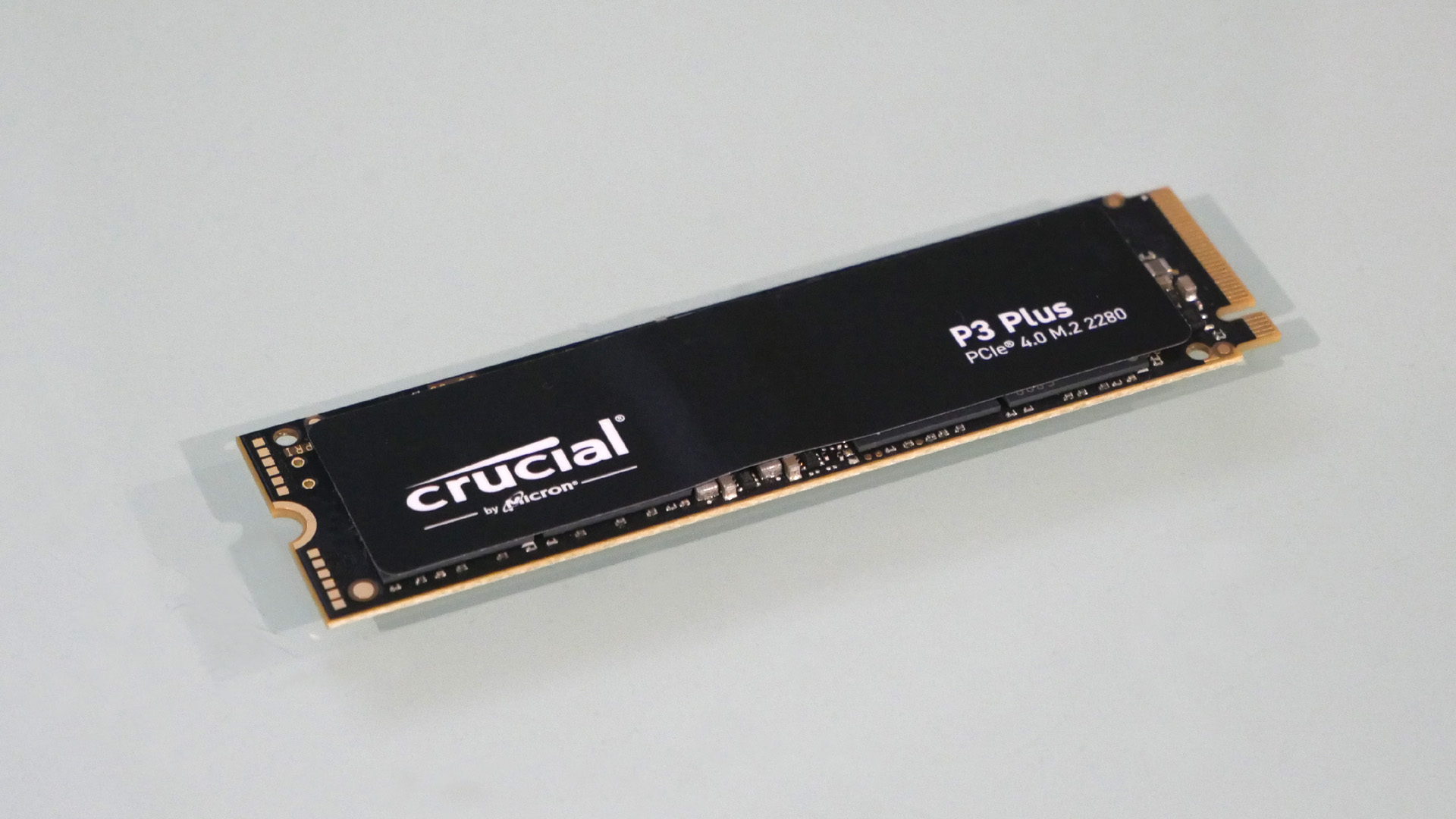Our Verdict
Crucial’s new QLC M.2 SSD delivers serious capacity at a very low price. But that affordability comes at a cost—it's tangibly slower than drives with TLC flash and higher-spec controllers. The real problem though is that some very decent TLC drives including Crucial’s own P5 Plus aren’t that much more expensive.
For
- Oodles of capacity
- Five-year warranty
- Fast enough most of the time
Against
- Low-spec controller chip
- Pretty pitiful underlying performance
- Not quite cheap enough
PC Gamer's got your back
More capacity for less cash. But at what cost? That’s the question for the new Crucial P3 Plus M.2 SSD, tested here in its 2TB configuration. It uses QLC flash memory to offer increased storage space at a conspicuously low cost, in this case around $179 (£205) for this 2TB drive at the time of this review. But is there a different price to be paid here?
In simple terms, the answer is yes. The Crucial P3 Plus uses parent company Micron’s latest 176-layer QLC NAND chips. QLC stands for quad-level cell and indicates four bits of storage per memory cell. That’s one more than the TLC or triple-level cell flash memory typically used in premium, high-performance SSDs.
Now, it’s well established that as cell-level bit densities increase, both performance and endurance take a hit. But it’s worth remembering roughly why. In simple terms, the complexity of reading and writing to a QLC cell is double that of a TLC cell. And that means it takes longer. Much longer. There’s the performance hit.
As for endurance, well, it comes down to the fact that every time a given cell is written to, it slightly wears out the oxide layer required to store the charge that in turn represents the bits—the zeroes and ones—that compose the actual data. And more bits per cell means that each cell is written to more frequently and thus wears out more rapidly. Hold all those thoughts.
Available in 500GB, 1TB, 2TB, and 4TB capacities, indications that the new Crucial P3 Plus is a value-orientated product go further than merely the choice of flash chips. In conspicuous contrast to Crucial’s more expensive SSDs, which use the brand’s own controller chips, the P3 Plus is fitted out with the Phison PS5021-E21T.
The Phison E21T is basically a budget PCIe 4.0 controller, offering just four memory channels to the competition's eight. It’s also a so-called DRAM-less chip and thus doesn’t support dedicated DDR cache memory. Instead, system memory performs the job of providing primary caching.
Speaking of cache, one of the most important elements of any QLC drive is SLC cache provisioning—or the proportion of the drive that can be allocated to run in much speedier SLC mode. In this case, it’s around 20% of the available free space on the drive. As the drive fills, then, the amount of SLC cache available will shrink. But the main point is that QLC tech tends to make sense on larger drives where SLC provisioning can be fairly generous. Even half full, this drive is large enough that you should still get a few 100 GB of high-performance SLC cache, which is decent.
Anyway, for the record Micron says its latest 176-layer QLC chips are around 25% quicker than its outgoing 128-layer QLC memory. If that sounds like a nice speed bump, Crucial says this 2TB model is good for 5,000MB/s reads and 4,200MB/s writes, which is obviously a fair chunk behind typical TLC-based drives. Crucial doesn’t even bother to quote IOPS numbers. Still, the P3 Plus does come with Crucial’s usual five-year warranty and 44TB of rated write endurance.
Symptomatic of the impact of QLC memory, that latter figure is barely better than one-third the endurance offered by a premium TLC-powered 2TB drive like the WD Black SN850. Of course, it’s absolutes and not comparisons that matter. Is 440TB enough? It adds up to 240GB each day, every day for five years. Plenty for all but the most demanding users, then.


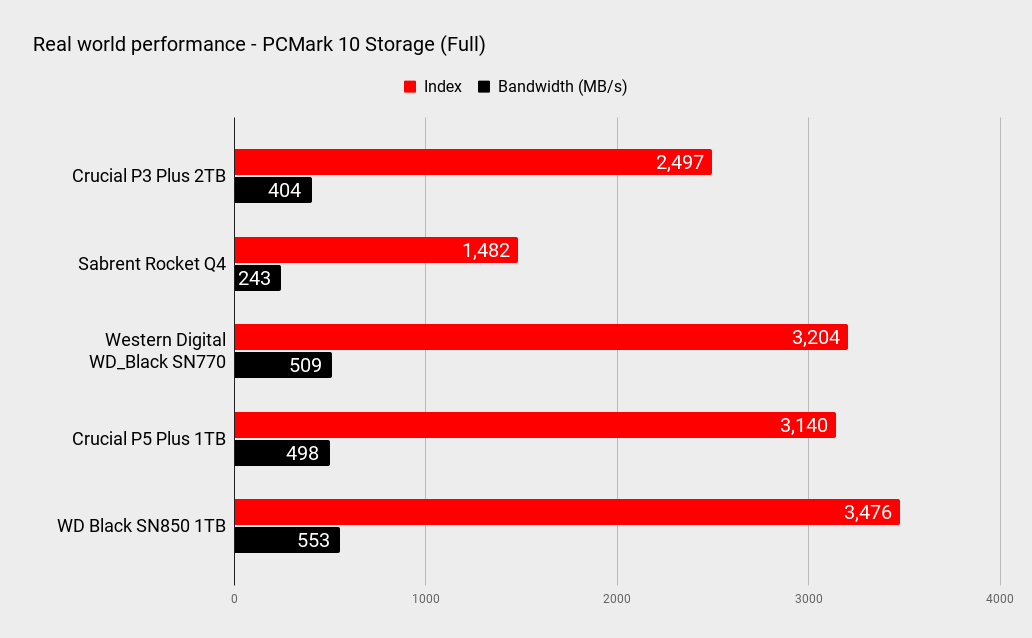
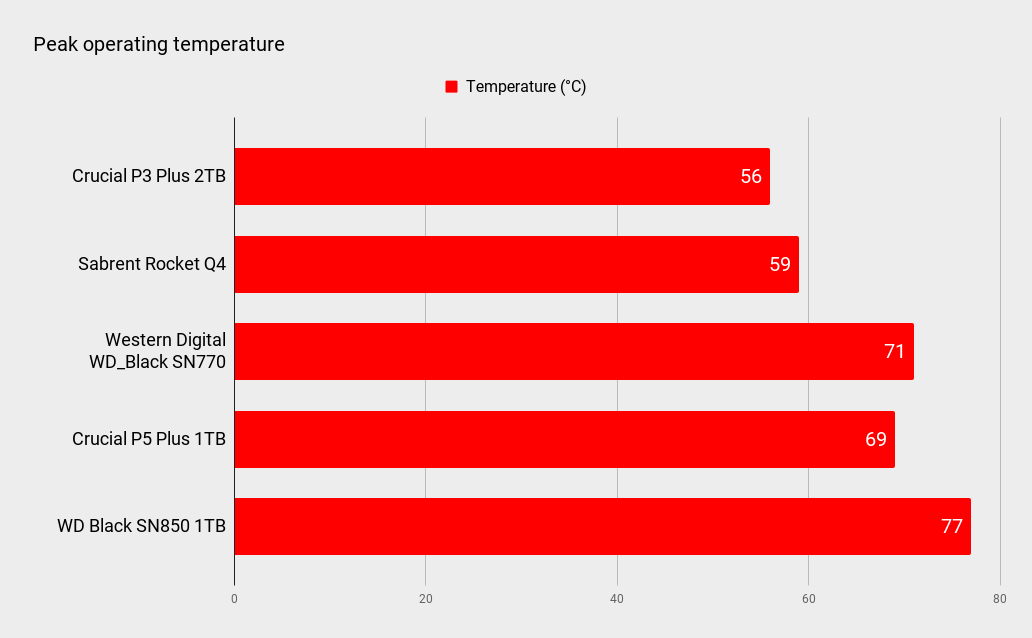

If the P3 Plus is likely to last long enough, how will it perform in the meantime? Adequately, is probably the best precis. Peak synthetic throughput measured by the likes of ATTO looks convincing enough at 6,890MB/s for reads and 5,940 for writes. But the numbers elsewhere are rather patchy. CrystalDiskMark reveals more realistic numbers, the drive achieving less than 5GB/s read speeds where premium drives clock in over 7GB/s. The P3 Plus’s 263MB/s 4K writes are actually pretty good, the 63MB/s 4K reads less so.
The arguably more real-world assessment that is PCMark 10 Storage likewise returns a pretty major shortfall versus TLC-based drives. Scoring under 2,500 points where top drives can hit 3,500 and likewise registering 68ms of latency against something in the mid-40s compared to a performance drive are clear consequences of that low-cost, high-capacity QLC memory and the budget controller chip.
There’s better news when it comes to sustained performance. The P3 Plus shows no signs of thermal throttling, maintaining peak performance in our pre-test fill routine until the SLC cache is fully exhausted after 500GB of writes and topping out at 56 degrees. That said, once you do get through the SLC cache, performance absolutely falls off a cliff, dropping to just 90MB/s write speed.
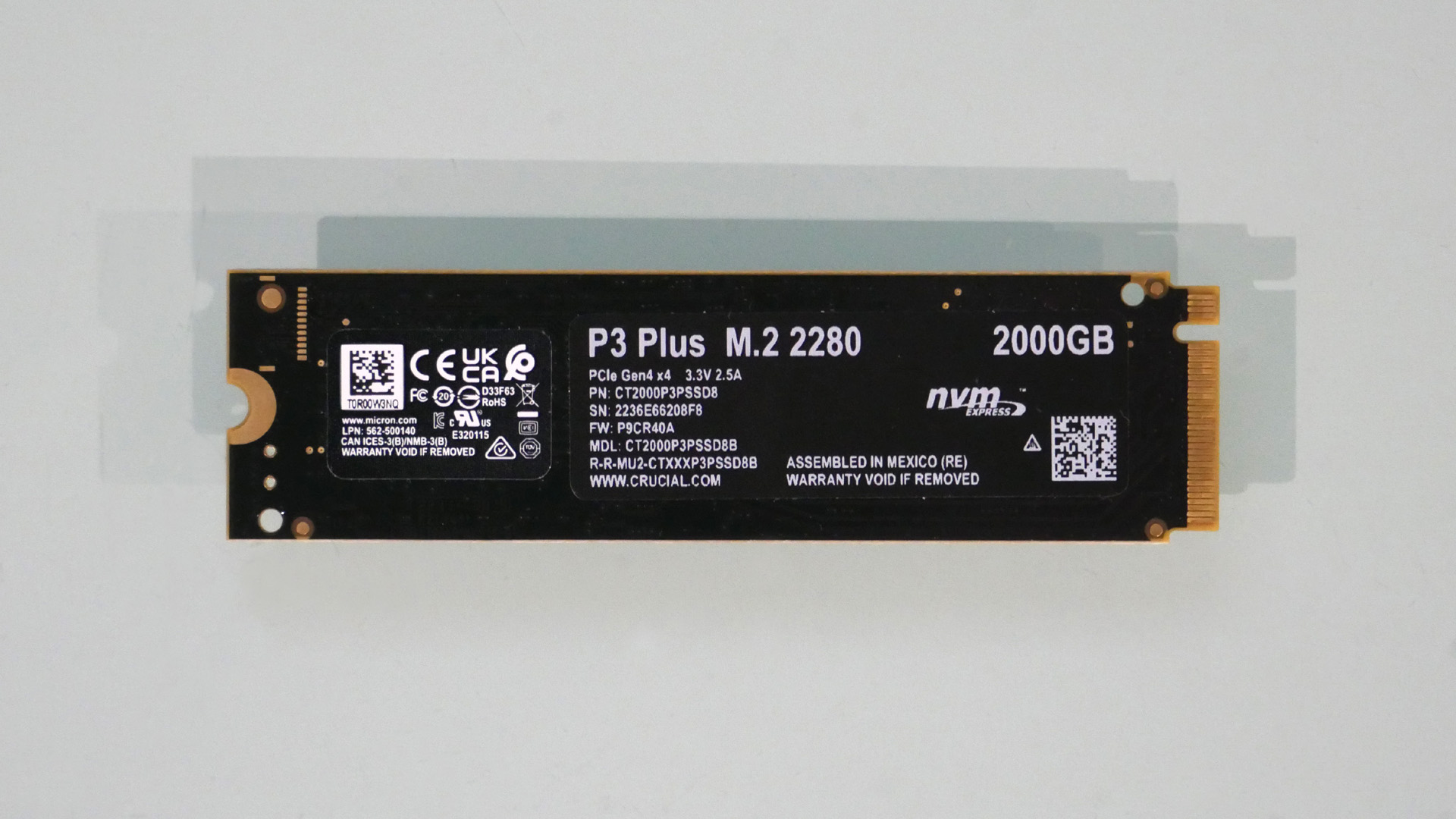
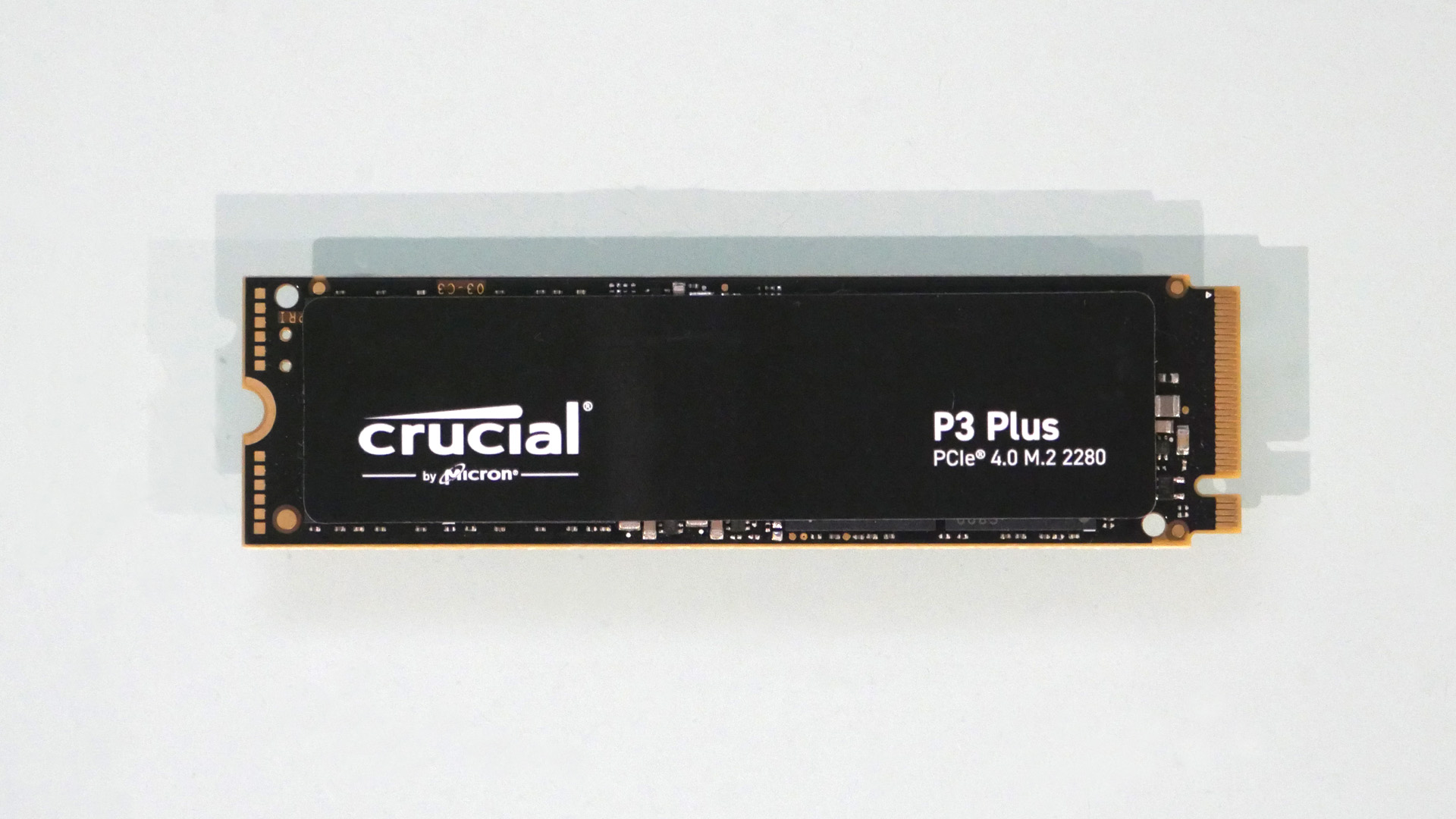

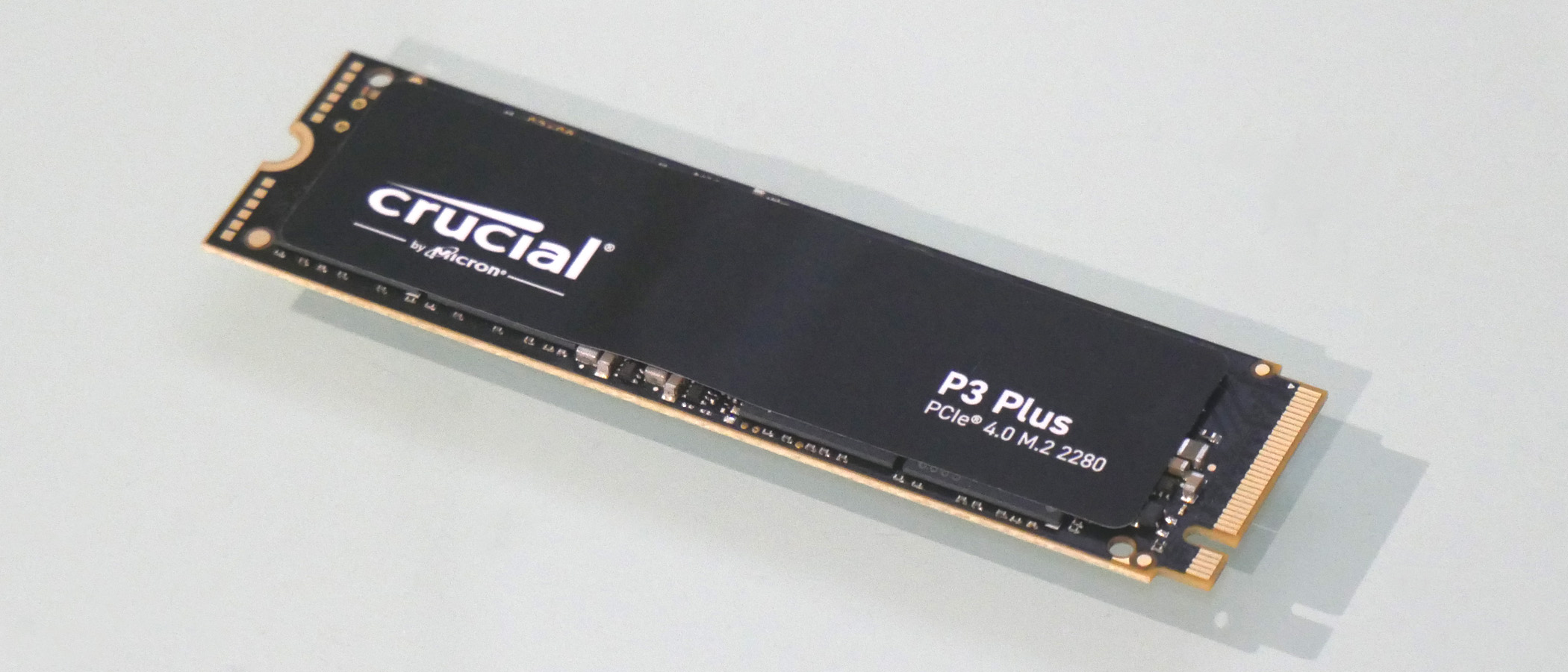
Overall, the Crucial P3 Plus performs largely as you would expect for a large-capacity QLC drive. While the SLC cache isn’t exhausted it’s arguably plenty quick enough for most needs. And we’re not worried about long-term endurance either.
The main issue is what happens when that SLC cache runs out. The whole point of a big, cheap drive like this is surely to fill it with loads of data. At which point you will expose the underlying performance of the QLC memory and run into performance issues in some scenarios. In that context, it’s worth noting that just $30 more buys you Crucial’s own P5 Plus TLC drive, neatly sidestepping all of the QLC-related downsides. In the end, that’s where our money would go. The savings from this QLC drive just aren’t enough.
Crucial’s new QLC M.2 SSD delivers serious capacity at a very low price. But that affordability comes at a cost—it's tangibly slower than drives with TLC flash and higher-spec controllers. The real problem though is that some very decent TLC drives including Crucial’s own P5 Plus aren’t that much more expensive.

Jeremy has been writing about technology and PCs since the 90nm Netburst era (Google it!) and enjoys nothing more than a serious dissertation on the finer points of monitor input lag and overshoot followed by a forensic examination of advanced lithography. Or maybe he just likes machines that go “ping!” He also has a thing for tennis and cars.
